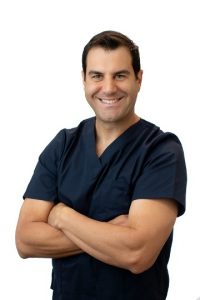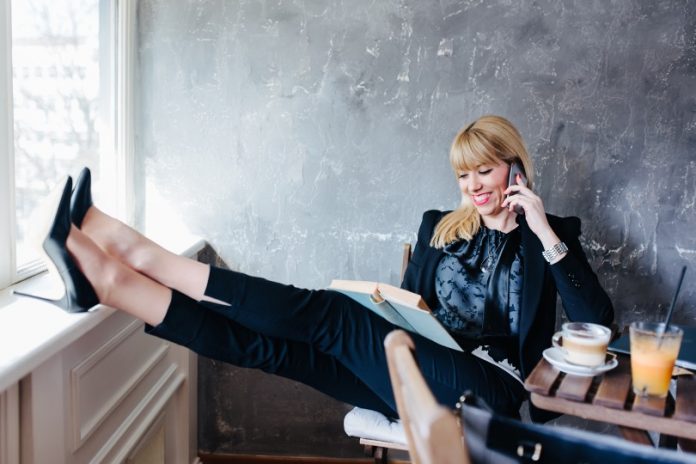Varicose veins and spider veins can cause a lot of pain and discomfort. The only thing that will resolve the problem in the long term is to have them appropriately treated by a phlebologist (vein doctor), but in the meantime, we’ve put together a list of some ways you can relieve the pain in your legs.
According to leading phlebologist, Dr Peter Paraskevas of Vein Health Medical Clinic (Part of the Paras Clinic Group), “Venous insufficiency (or varicose veins) occurs when the one-way valves on the interior of our veins fail, and blood is allowed to leak backward. These one-way valves normally assist in returning blood to the heart, but when they stop working properly, you have venous reflux. If one parent has had a venous disease you have about a 33% chance of developing vein problems; with both parents this increases to about 90%.”
Some of the signs and symptoms of varicose veins – apart from the bulging bluish veins you might be able to see on the skin surface – are aching and pain in the legs, dryness, itching, and eczema near the problem veins, leg fatigue, heaviness, burning, throbbing, cramping and restless legs at night. When venous disease progresses, symptoms can worsen into the breakdown of the skin which develops into open sores that won’t heal, infections, and even blood clots.
But for now, let’s relieve some pain.
Dr Peter Paraskevas recommends these 5 Tips:
1. Avoid spending long periods standing or sitting.
If you can get up and move around regularly, this can help get blood flow moving, and reduce the cause of the pain (the static blood flow).
2. Wear compression stockings or socks.
The kinds of compression stockings you wear on a long-haul flight to prevent deep vein thrombosis (DVT) are perfect to help support your vein walls. Wear them when you can’t avoid standing or sitting for long periods, not just on a plane. The pressure helps prevent the blood from pooling and allowing veins to enlarge in areas where vein valves are at their weakest.
3. Elevate your legs.
Varicose veins are a great reason to put your feet up at the end of the day. The purpose is to let gravity help move the blood that was inefficiently moving in the legs. This can also help with swelling in the legs, helping the blood and lymphatic fluids to drain.
4. A cold compress or ice pack.
Cold or ice packs are great for pain relief and reducing swelling.
5. Stretch and exercise.
Stretching and exercise can help relieve pain. One of the functions of the calf muscle is to squeeze the veins in the legs, which can help move blood along your varicose veins back toward the heart.
What about natural remedies and supplements?
Says, Dr Paraskevas, “Any amount of natural remedies, food extract supplements, lotions and potions claim to relieve varicose vein symptoms, but there is little if any evidence to show they achieve anything at all. Stick with those listed above and make plans to properly address your varicose veins medically.”

Getting your varicose vein treatment
Everything advised above are excellent temporary options. However, varicose veins do not heal themselves. A phlebologist can assist you by diagnosing and treating your varicose veins. Your phlebologist will choose the most appropriate treatment for you based on the severity, location, and diameter of your varicose veins and spider veins. Each treatment involves sealing the varicose vein closed, blood flow reroutes through other veins, the vein heals and is absorbed into the body.
What treatment is available?
Non-surgical treatment is available which will help elevate painful symptoms. For long term results EVLA, RFA and a Vein Adhesive known as VenaSeal which became Medicare approved in 2017.
These are all walk-in, walk-out procedures which are usually completed in under an hour.
For more information on varicose veins and the latest treatments visit www.veinhealth.com.au part of the Paras Clinic group.

![5 Reasons You Should Travel Alone Airplane [image source: chau nguyen/ http://thedevilhatessweatpants.blogspot.com.au ], crowd ink, crowdink, crowdink.com, crowdink.com.au](https://crowdink.com/wp-content/uploads/2016/08/Chau-airplane-218x150.jpg)




























![5 Reasons You Should Travel Alone Airplane [image source: chau nguyen/ http://thedevilhatessweatpants.blogspot.com.au ], crowd ink, crowdink, crowdink.com, crowdink.com.au](https://crowdink.com/wp-content/uploads/2016/08/Chau-airplane-100x70.jpg)


